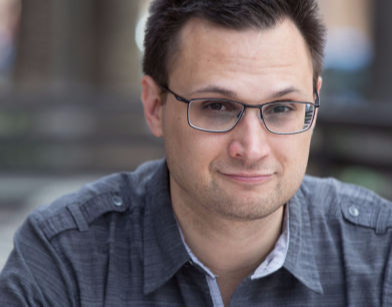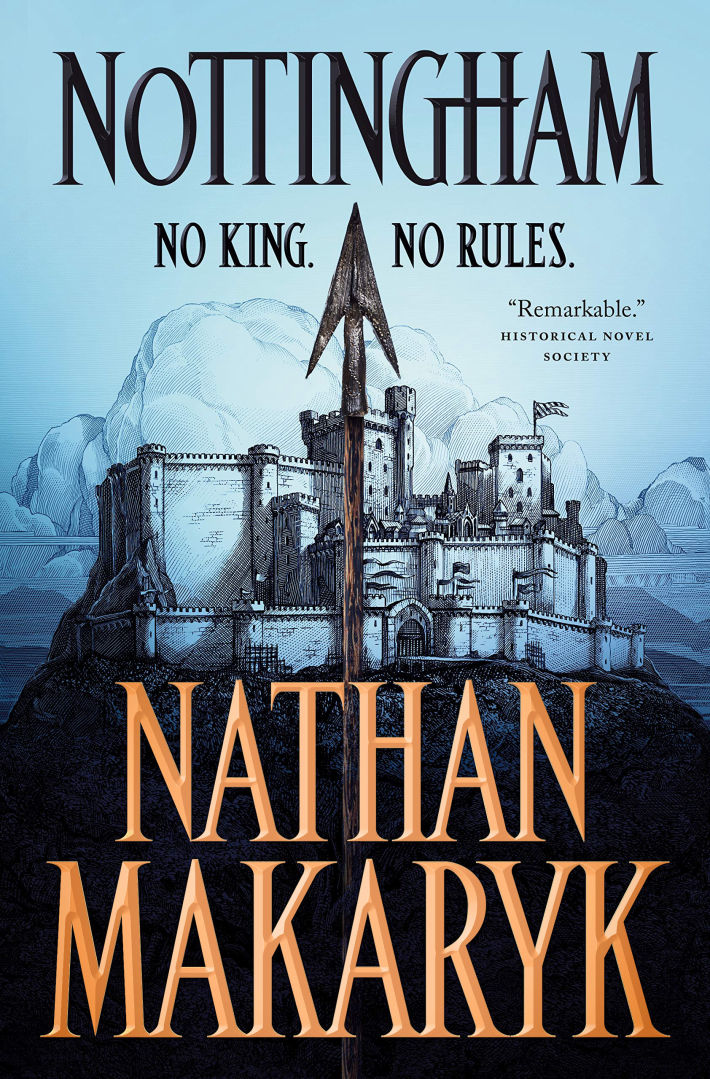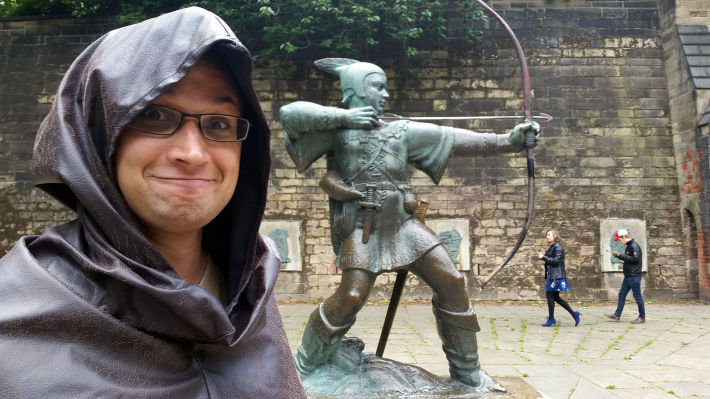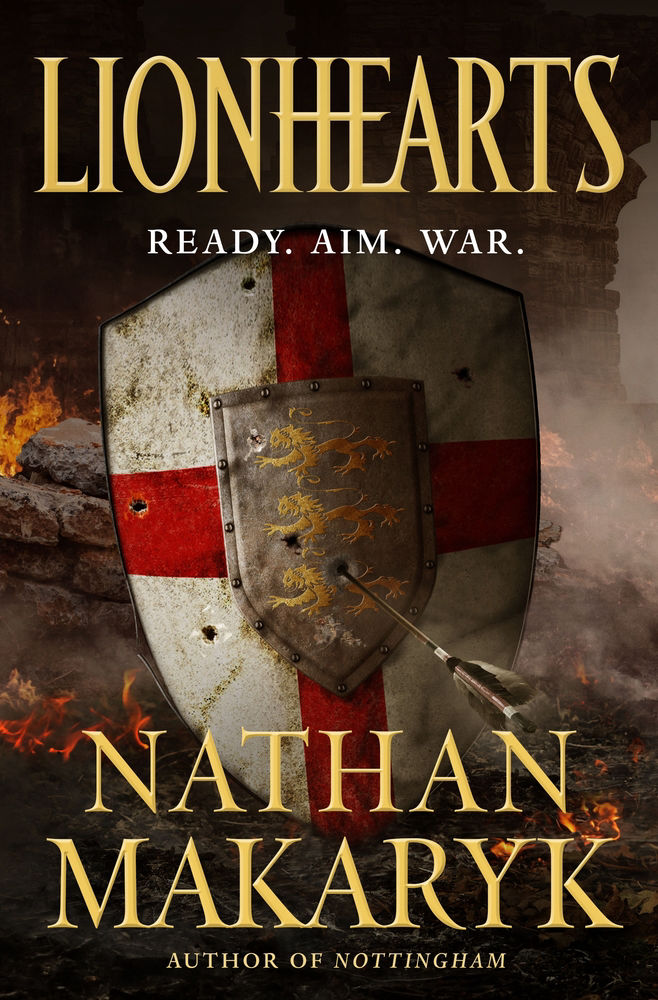Lionhearts - The sequel
AWW: Did you have a sequel in mind when you wrote Nottingham?
NM: I did! The play was intended to stand on its own, of course, but when I decided to novelize it I knew that opened up the possibility of extending beyond the first story, if it was successful. So as I was researching the history, I made a loose outline of the historical events that would be important to include as the series progressed, and how I’d want the characters to get entwined into those, and some general plot ideas for what a 3-book or 5-book series might look like. I didn’t want to go in without a plan, so that I could work in some seeds for future events early on.
Yes, there are some obvious unresolved conflicts in Nottingham that directly set up the wheels at play in Lionhearts, while other times it’s more about setting up a character’s backstory early to support what I know is going to happen later on. For example, it’s completely unimportant in the first book that Will Scarlet and Elena came from a Nottingham gang called the Red Lions, but that’s vital information in the second book, and I didn’t want it to feel like it came out of nowhere. I was lucky in that I had most of Lionhearts finished while I was still editing Nottingham, so I was able to integrate those kinds of connections into the first novel as needed.
Other times it’s just about introducing characters that are going to grow over the series. Prince John, for instance, wasn’t in my play and has only a very small role in the first book. But he’s obviously a huge historical figure that’s a big part of book two and (crosses fingers) future books, so I introduced him in book one even though his plot was fairly tertiary. Similarly, John has a quirky young advisor named Wally (Walter de Gray), who will one day bribe his way to the title of Chancellor when Prince John becomes King. That’s probably Book Four material, but these are the kinds of historical events that are critical to know in the research stage, because it lets me set them up way in advance. Again, whether or not I’ll be lucky enough to still be writing books in this series that far into the characters’ future, I don’t know. But I definitely have an intriguing plot outlined for book three, and there are plenty of seeds for it (obvious or not) in Lionhearts.
AWW: I'm intrigued by the plural title Lionhearts - which seems to hint at the old ruse of "King Robin" and "King William" from the first novel.
NM: Yes, that’s a good analogy! There are many people in Book Two who might call themselves a “Lionheart,” based on the charisma and bravery that King Richard is purported to have. It’s more thematic than literal, but Book Two is full of people who see themselves as the king of their domain, who might not end up faring much better than King Richard: sitting in an Austrian prison. There’s a lot of discussion about what makes a person lionhearted, and what kind of people rise to answer the call to action. And then about two-thirds of the way into the novel, we get an entirely new definition for a “lionheart” that hopefully shines an entirely different light on the title.
AWW: What can you divulge about Lionhearts?
NM: Lionhearts continues to deconstruct more Robin Hood tropes, much like Nottingham did, but it also deviates a lot more from the standard Robin Hood formula. I wanted the first book to feel very much like the canon Robin Hood tales that people think they expect, but in the sequel I have a lot more control over new plotlines. One of the big tropes tackled in this book is the Lionheart himself, King Richard (or Richard of the Last Reel, as he’s known in the movie industry) who is famous for sweeping merrily back into town, slapping evil Prince John’s knuckles for misbehaving, and making everything okay again. That’s far, far from the truth of what happened historically, which—spoiler alert—involved a lot of people dying.
Another thing I get to do in Lionhearts is take on the “Robin-verse,” if you would. In Book One I had to settle on one version of Robin Hood as the titular character, but part of the joy of the Robin Hood catalog is how many different interpretations we have of him. In Lionhearts, there are a lot of characters who, in one way or another, claim the title of Robin Hood as their own. For instance, the earl Robert of Huntingdon is often attributed as a potential originator of the Robin Hood myth, and he’s a character in this second book ... who is not necessarily dissimilar from an Errol Flynn. You’ll also see a more anarchist-style Robin Hood, and a Robin-Hood-gone-wrong . . . and there’s even a knowing wink to a particularly fox-shaped Robin Hood.
AWW: Is there anything else you'd like to add?
NM: I’ve probably said far too much already! I think the last thing I can proudly claim with this book is an increased amount of agency for its women. In the first book I did as much as I could to add three-dimensional, meaty female roles, but I also wanted to stay true to the “typical” Robin Hood lore, which is overwhelmingly predominately male. I’m happy that the first book had an equal number of female and male recurring POVs, but the main story was still very much about two men. In the sequel, I had so much more leniency to deviate and tell my own story within the world, which meant a much better balance not only for Marion and Arable to lead, but also for new powerful female characters, even within a very patriarchal time period.
AWW: Thanks again for your time. I'm looking forward to reading Lionhearts.
NM: I’m so excited for people to get it! Unlike the first book which depended on you bringing your preconceptions about Robin Hood along for the ride, this one hopefully takes you places you never expected.




Contact Us